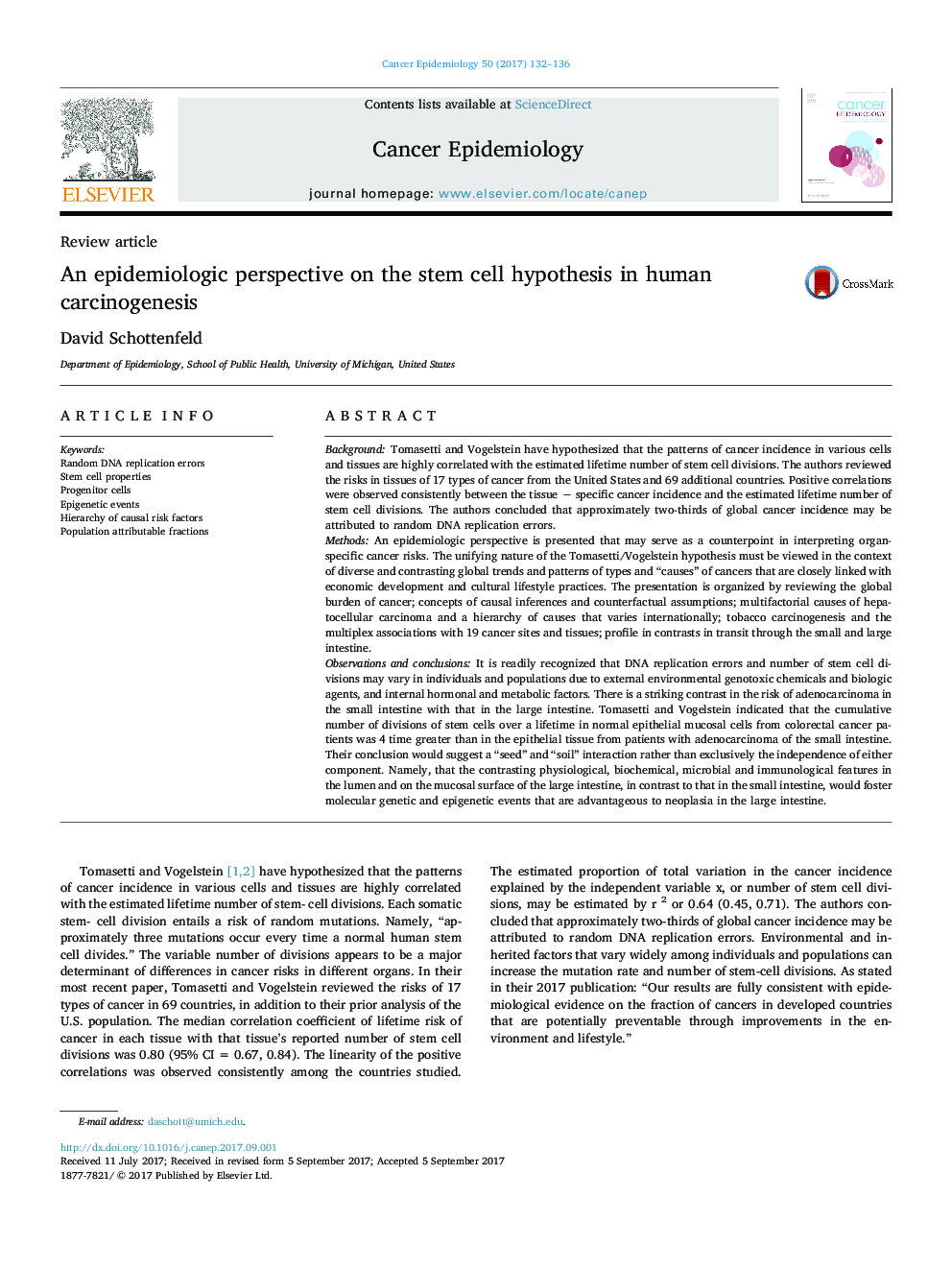| Article ID | Journal | Published Year | Pages | File Type |
|---|---|---|---|---|
| 8433054 | Cancer Epidemiology | 2017 | 5 Pages |
Abstract
It is readily recognized that DNA replication errors and number of stem cell divisions may vary in individuals and populations due to external environmental genotoxic chemicals and biologic agents, and internal hormonal and metabolic factors. There is a striking contrast in the risk of adenocarcinoma in the small intestine with that in the large intestine. Tomasetti and Vogelstein indicated that the cumulative number of divisions of stem cells over a lifetime in normal epithelial mucosal cells from colorectal cancer patients was 4 time greater than in the epithelial tissue from patients with adenocarcinoma of the small intestine. Their conclusion would suggest a “seed” and “soil” interaction rather than exclusively the independence of either component. Namely, that the contrasting physiological, biochemical, microbial and immunological features in the lumen and on the mucosal surface of the large intestine, in contrast to that in the small intestine, would foster molecular genetic and epigenetic events that are advantageous to neoplasia in the large intestine.
Related Topics
Life Sciences
Biochemistry, Genetics and Molecular Biology
Cancer Research
Authors
David Schottenfeld,
